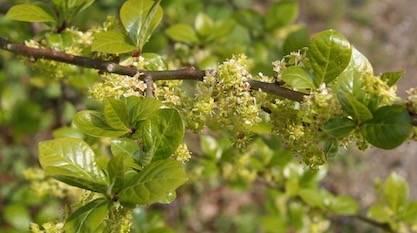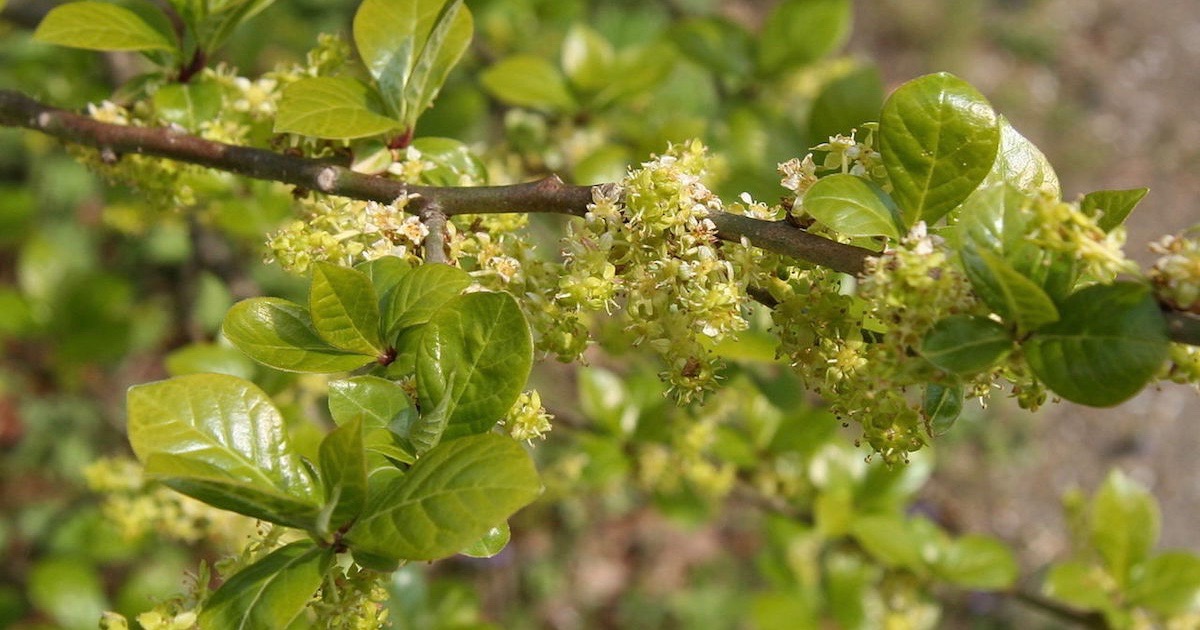 Life Sciences
Life Sciences
Plant Spirals Finally Solved?


The patterning of leaves and flowers in plants, called phyllotaxis, has long attracted scientists and puzzled them as well. How do the patterns form? Many patterns obey mathematical rules based on the Fibonacci sequence (Fn = Fn-1 + Fn-2, …), which is related to the “Golden Ratio” that the human eye finds pleasing.
How does a plant without eyes or a brain achieve such beauty and precision, orienting leaves according to the Golden Angle Phi (137.5 degrees)? Simpler patterns include opposite (leaves on opposite sides of the stem), alternate (leaves alternating at 90-degree angles), whorled (arranged around a cross-sectional circle), and others. The same questions arise for them all: how are these patterns achieved at a molecular level as a consequence of genes?
Functional reasons for the patterns are not hard to imagine; phyllotaxis lets sunlight reach more leaves, including the lower ones. Fibonacci spirals provide the best packing for optimum light to reach the maximum number of leaves. Benefits to the plant, however, are not causative; they cannot drive the plant to create mathematical spirals. Presumably random patterns could perform just as well.
Modeling Reality
Research to explain phyllotaxis has followed two approaches. One is empirical, observing levels of plant hormones throughout leave growth. The other approach is mathematical, creating models that re-create all the patterns given the right inputs for the fewest parameters. Japanese scientists at the University of Tokyo recently improved the leading mathematical model.
Leaf arrangement has been modeled mathematically since 1996 using an equation known as the DC2 (Douady and Couder 2). The equation can generate many, but not all, leaf arrangement patterns observed in nature by changing the value of different variables of plant physiology, such as the relationships between different plant organs or strength of chemical signals within the plant. [Emphasis added.]
The DC2 model assumed an interaction between a growth promoter and a growth inhibitor. By specifying a rule that the inhibitor acts to restrict new leaf buds, called primordia, from forming near an existing one, and further specifying that the effect of the inhibitor decreases with distance, DC2 could re-create many phyllotaxis patterns in silico. It failed to account for the predominance of Fibonacci spirals, however, and could not account for a peculiar pattern that arranges leaves around the stem from a start at 0 degrees then (moving upward) 90 degrees, then 270 degrees, then 180 degrees. This pattern, called “orixate” after the Japanese shrub Orixa japonica, is shared by at least four unrelated plants.
By extending the DC2 model, their new EDC2 model (Expanded DC2) re-creates these observations. The new factor varies the strength of the inbitor with age.
“We changed this one fundamental assumption — inhibitory power is not constant, but in fact changes with age. We tested both increasing and decreasing inhibitory power with greater age and saw that the peculiar orixate pattern was calculated when older leaves had a stronger inhibitory effect,” said Sugiyama.
Animations show the effect. As the numerical inputs vary, the model generates expanding colored areas that mimic the phyllotactic patterns. Red and pink indicate areas promoting growth, and blue indicates areas inhibiting growth. Presto! The model fits most of the observations. It re-creates the orixate pattern. It generates more Fibonacci spirals than the old model did. It also generates some of the whorled and less-familiar patterns, like distichous and tricussate.
“There are other very unusual leaf arrangement patterns that are still not explained by our new formula. We are now trying to design a new concept that can explain all known patterns of leaf arrangement, not just almost all patterns,” said Sugiyama.
Reifying the Model
As gratifying as this achievement is, it is only a model. If the model represents something real in nature, how does the promoter-inhibitor time-varying process actually work at the molecular level? At first glance, it must fit a time-and-motion process.
Botanists have long known of an important growth promoter in plants called auxin. Wherever auxin concentrates, things happen. Picture the tip of a growing plant, called the shoot meristem. Auxin moves upward, creating a concentration gradient. Along with it, as described in an earlier article here, a protein called PIN1 orients where the auxin should converge on one side to initiate a primordium. This becomes the starting point for the pattern.
Inhibition results from auxin being depleted from surrounding cells, preventing formation of other primordia nearby. An “inhibitory field” thus forms around the primordium, decreasing with distance. Picture a timer starting. As auxin continues moving up the meristem, the inhibition will be strongest near the last primordium. A feedback loop begins: the stronger the inhibition, the more auxin will concentrate elsewhere. When the inhibition falls below a threshold, the timer goes off, and the next primordium will begin at an angle to the previous one. “Primordia move away from the center of the shoot apex,” they explain, “with a radial velocity of V(r) that is proportional to the radial distance r because of the exponential growth of the shoot apex.”
The old DC2 model accounted for that much. The new EDC2 model adds time variance to the inhibition, which provides a closer fit to patterns in real plants.
Getting Warmer?
It’s exciting in science to see a model getting closer to empirical observations. When it helps solve a long-mysterious puzzle like phyllotaxis, and explain it according to simple mathematical rules, it’s even more exciting. But in a real sense, this team has made things more complicated. Now, molecular biologists and geneticists have to account for genes and epigenetic factors that can vary the inhibitory effect of auxin gradients over time.
There are further reasons to delay the celebration. How does biology get from a string of DNA letters to a dynamic, time-dependent feedback loop? Does the model work for sunflowers, which are radial instead of linear? Why does the Golden Angle of 137.5 degrees keep showing up? And why do humans find it beautiful? In a sense, the biggest questions about Fibonacci spirals in plants still remain unanswered.
As is so often the case in scientific research, the authors of this model realize the work is not done.
Future investigation of the regulatory properties of auxin polar transport during primordium development would provide clues regarding the molecular mechanisms underlying the presumptive age-dependent increase in the primordial inhibitory power and contribute to understanding the variation and limitation of phyllotactic patterns.
In short, our understanding of phyllotaxis at this point remains quite limited.
And Now This
One of the puzzles about biological patterning is why the Fibonacci spiral shows up in so many unrelated organisms, such as in conch shells and snail shells, as well as in plants. Another case recently came to light, reported by Springer publishing: “Collagen fibres grow like a sunflower.”
Sure enough, tiny collagen fibers arrange themselves in Fibonacci patterns, too. These are at least an order of magnitude smaller than those in plant stems, because those involve many cells, and collagen proteins form within the cells of animal bodies. The rationale for the pattern, also, is different: it has nothing to do with sunlight reaching the lower leaves. “The cable-like assemblies of long biological molecules combine to form tissues as varied as skin, corneas, tendons or bones,” the news item says.
The connective tissues are hierarchical structures which undergo several phases of association, producing fibril organisations adapted to various functions within living organisms. In this study, the spontaneous association step under scrutiny is unique because the diameter of the fibre remains constant throughout its growth, while the end of growth manifests a characteristic parabolic profile. After studying several possible models, the researchers concluded the most likely explanation is that the fibres spread out from the fibre axis, along a stem, similar to how a sunflower’s florets grow.
The authors note that phyllotaxis, or the growth of leaves, ensures the best packing possible in contexts of circular symmetry, as is the case with dense collagen fibres. “However, owing to the complexity of the material, appropriate experimental studies, along directions suggested by the model itself, are needed in order to establish it firmly,” says Jean Charvolin, co-author of the study.
Plants are thought by Darwinians to have diverged long, long before these Fibonacci patterns could have evolved in animals. Is this not a case of convergent evolution to the extreme? Can the EDC2 model account for this?
The universality of mathematical elegance in so many diverse phenomena presents a severe challenge to any theory of blind chance. It’s time to give voice to those who perceive an underlying purpose in the world around us.
Photo: Orixa japonica, by Michael Wolf [CC BY-SA 3.0], via Wikimedia Commons.
